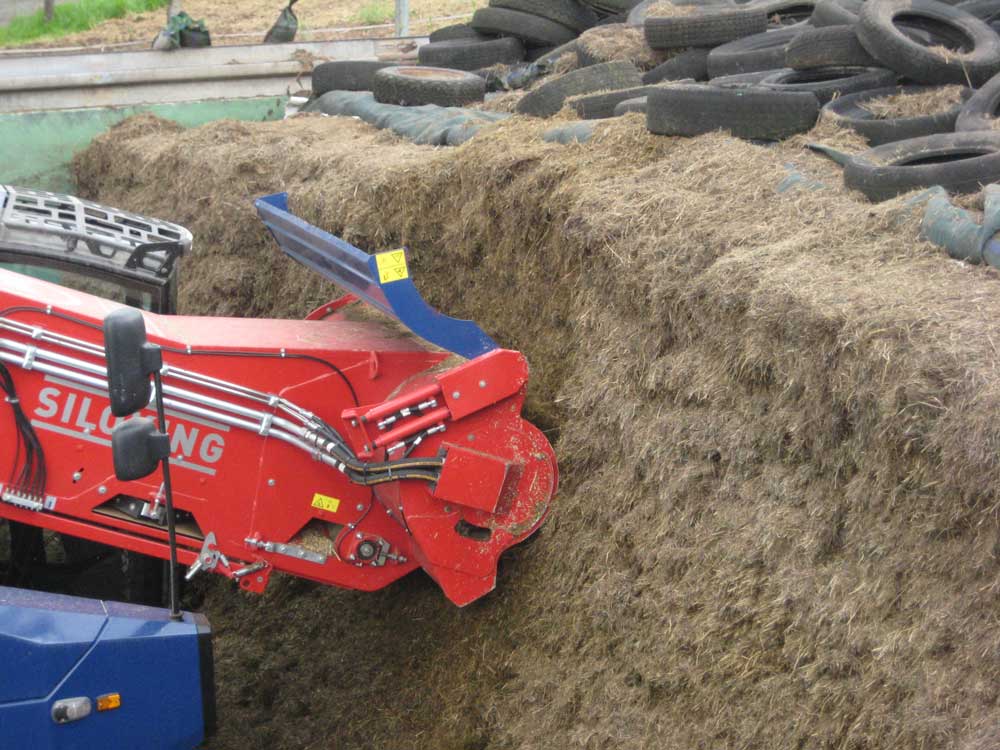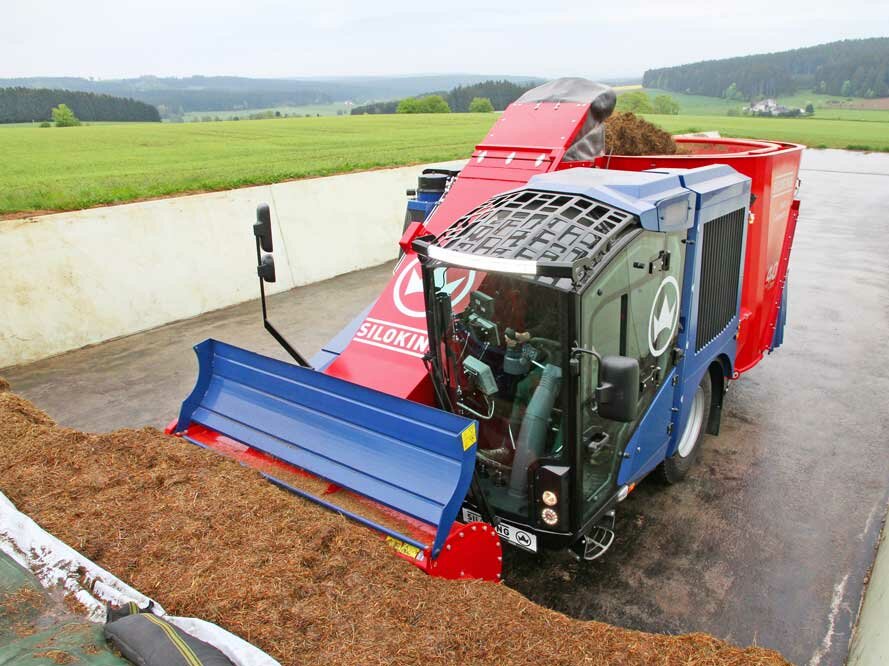Self-propelled vertical feed mixer wagon Siloking Selfline: Drives itself (almost)
By Dr Harald Reubold, DLG Test Center Technology and Farm Inputs
On the face of it, various factors play a role in deciding for or against a self-propelled feed mixer wagon. And it’s an important decision. After all, the difference in capital investment involved between the two variants represents a sum at least in the upper five-figure range. Also, self-propelled machines had the reputation that grass silage removal by the cutter from the clamp face was slower than, for example, the amount that could be removed and loaded by tractor front loader with silage grab.
Advantages of a self-propelled machine
On the other hand, self-propelled machines also offer a few advantages: Removal areas at the clamp face are left very clean, leading to less feed and feed quality losses. In principle, working time when using a self-propelled machine is less. Such savings are particularly noticeable where feed removed from a number of clamps is to be mixed. This can otherwise involve lengthy manoeuvring times. Additionally, input of two tractors can be saved by applying the single self-propelled solution.
Farm-based decisions
Every enterprise must decide for itself the direction to take in this respect because the working time for carrying out the operation, as well as the annual costs, represent important points that are different for every farm and therefore must be considered on an individual basis. Crucially important for a decision are, however, reliable figures such as those produced through testing for DLG-Approved certification. The self-propelled vertical feed mixer wagon Selfline 4.0 Compact 13 m3 from Siloking Mayer Maschinenbau, Tittmoning in Germany was subject to the full test under practical working conditions by the DLG Test Center.
Extensive test programme
A comprehensive DLG working performance test covers technical measurements, e.g. on test stands, evaluation of practical operation as well as findings regarding ease of operation, maintenance and durability, working safety and safety on the road. Thus, performance is determined for silage removal (fig. 1) and filling of the mixer wagon. According to type of silage, this varied between 962 kg/minute for forage wagon harvested grass, 1,269 kg/m for chopped grass and 3,255 kg/m for maize silage. All three performances were evaluated by the DLG testing commission with »++ = clearly better than standard«, as were also the very low losses during removal. The precision of the mixing procedure was determined with half-full and full loading in each case with a forage wagon grass/maize mix (fig. 2) or chopped grass/maize mix. Here too, the Siloking mixer wagon returned above average performance in all criteria.

Photo: DLG
DLG test results as decision aid
The weighing precision, determined by loading a known weight and comparing that with the wagon weigher reading, was also evaluated as »++ = clearly better than standard«. Evaluated with feed discharge were in sequence criteria including operational visibility according to direction of discharge, discharge performance, residues left during emptying of mixer, or whether the deposited swath was driven over or not. Here too, evaluations right up to highest marks were awarded.
Determined as further hard facts – in other words results reliably confirmed by the technical measurements – were for the first time fuel consumption figures measured during practically relevant work cycles comprising cutting and removal of chopped grass and maize with intermittent changing, mixing during the drive to the feeding barn and subsequent discharge. As shown by fig. 3, during a complete cycle involving 3554 kg feed and an average distance travelled of 401 m, fuel consumption recorded was 14.8 l/h or 0.874 l/t.
Regarding ease of operation and ergonomics, all operating controls were found to be practically positioned on the right-hand side of the cab, itself situated on the left before the front axle. The drive train with its four wheels and centred steering via twin wheels at the rear resulted in the wagon being very manoeuvrable. However, the vehicle rear reacted very directly to steering impulses, requiring some practice on the part of the driver. This behaviour had to be got used to, especially for driving on public roads and lanes. For lubrication, a relatively large number of lubrication points had to be serviced – 29 in all. However, good accessibility, in every case either in upright or stooped position, still earned the DLG test commission’s best note »++ = better than standard« for this aspect.
Summary
With the self-propelled feed mixer wagon Selfline 4.0 Compact 13 m3, Siloking Mayer offers a technically well-developed product which passed the comprehensive DLG full test with very high marks. The respective test report is available in the DLG website under:

The DLG Approved full test for feed mixer and discharge wagon comprises:
- Description and technical data
- Technical measurements e.g. on test stands
- Evaluations during practical work
- Evaluations for working safety



